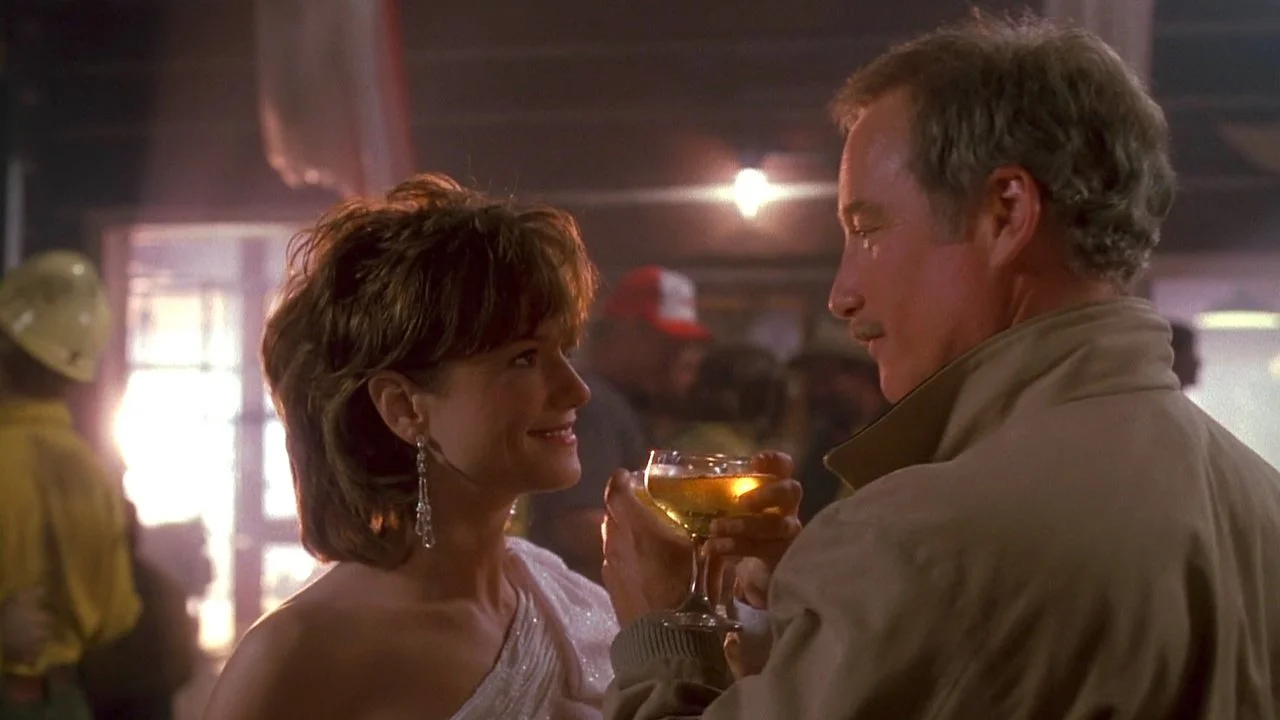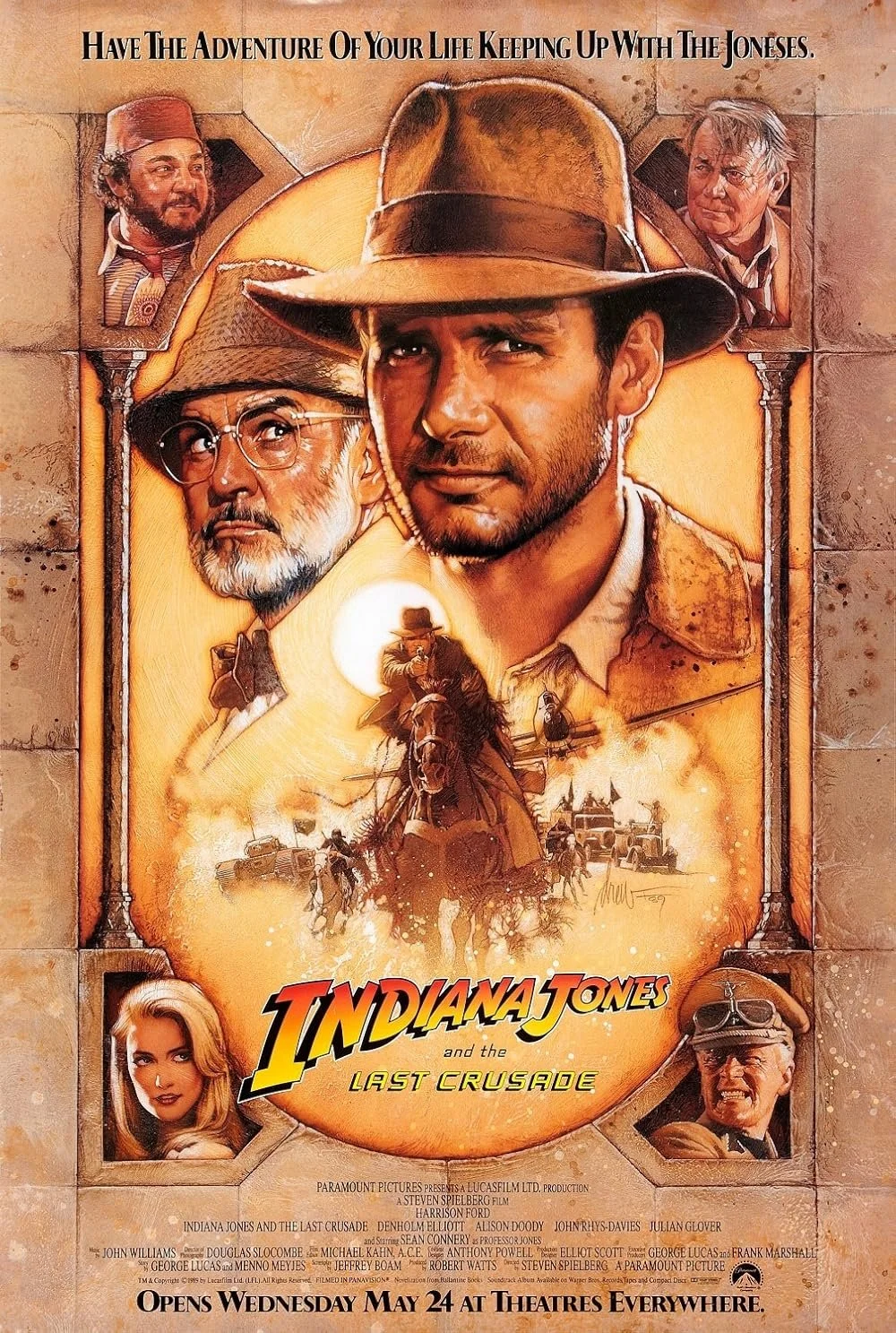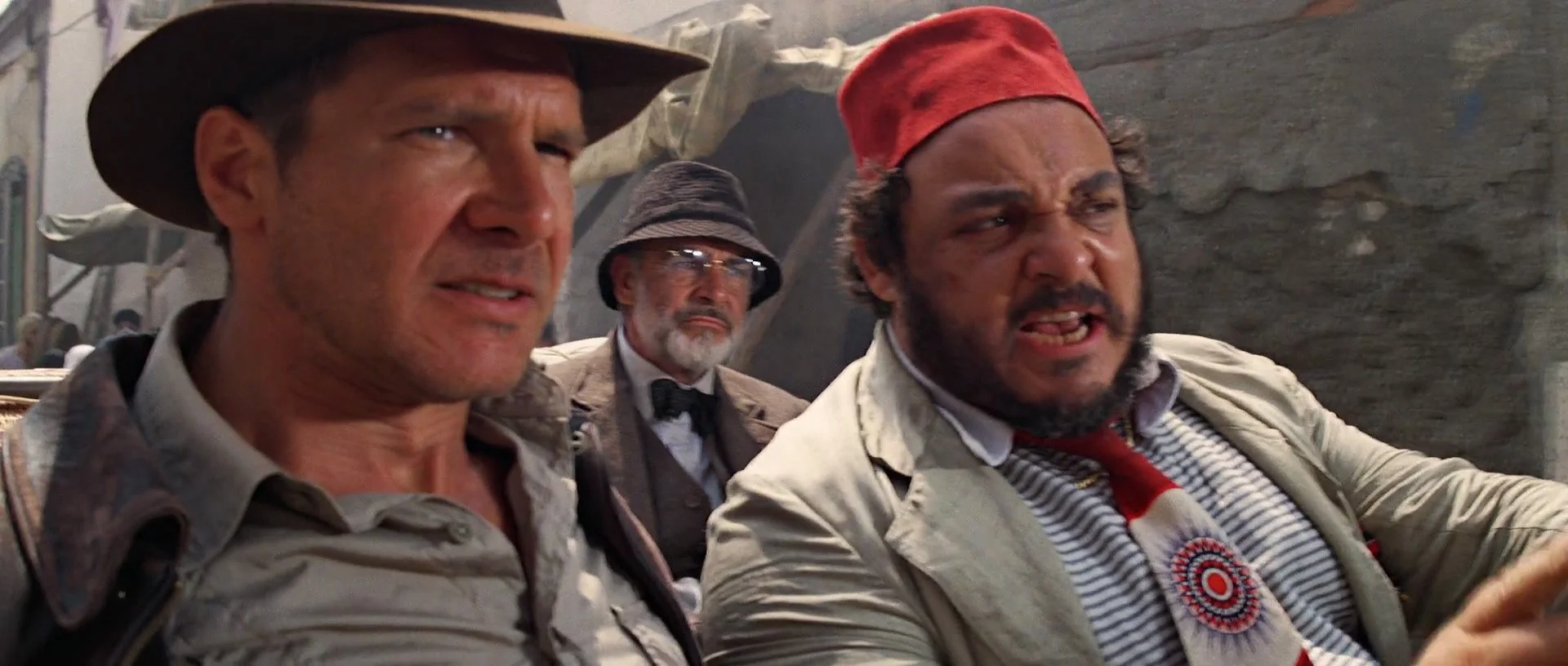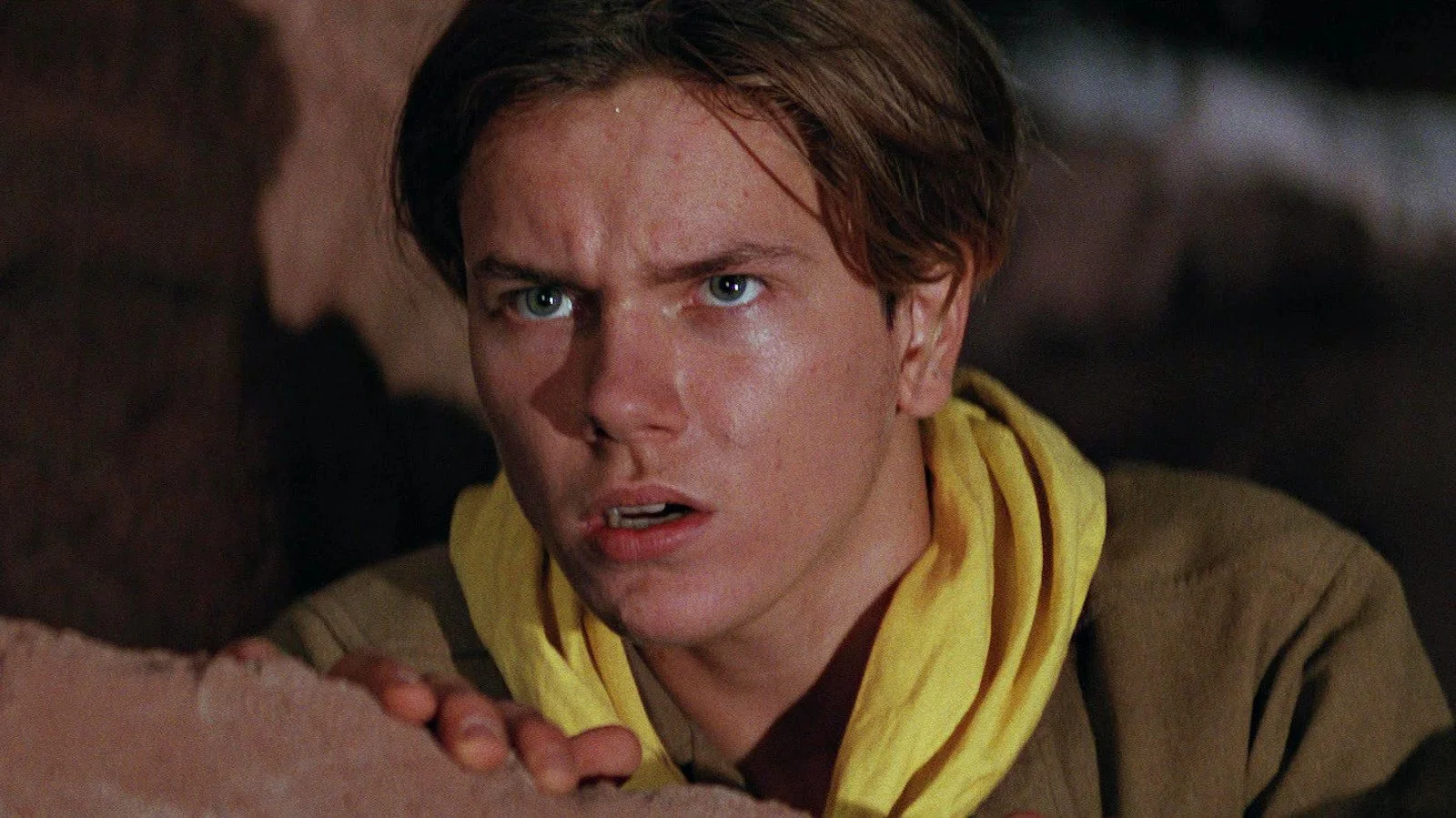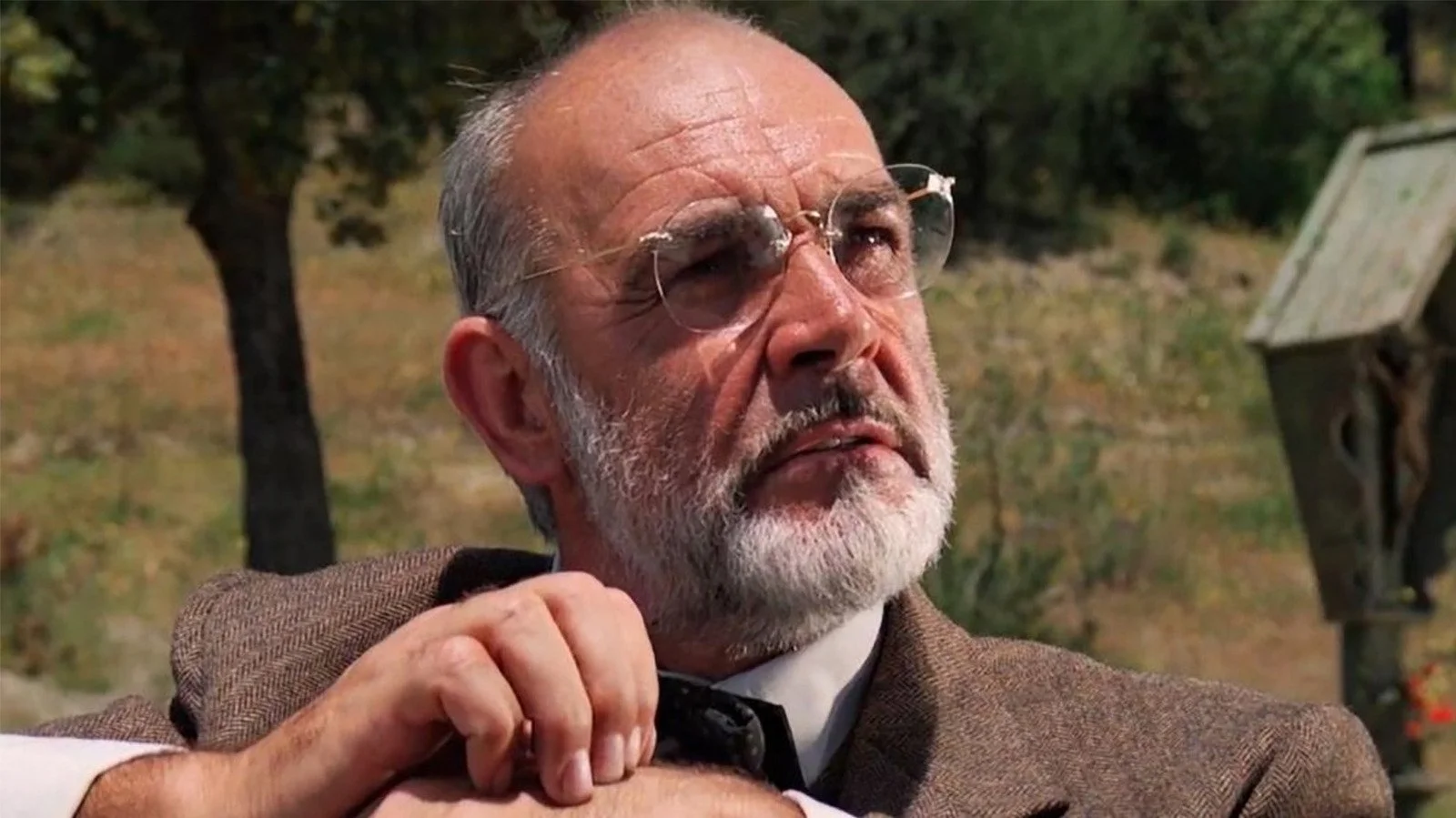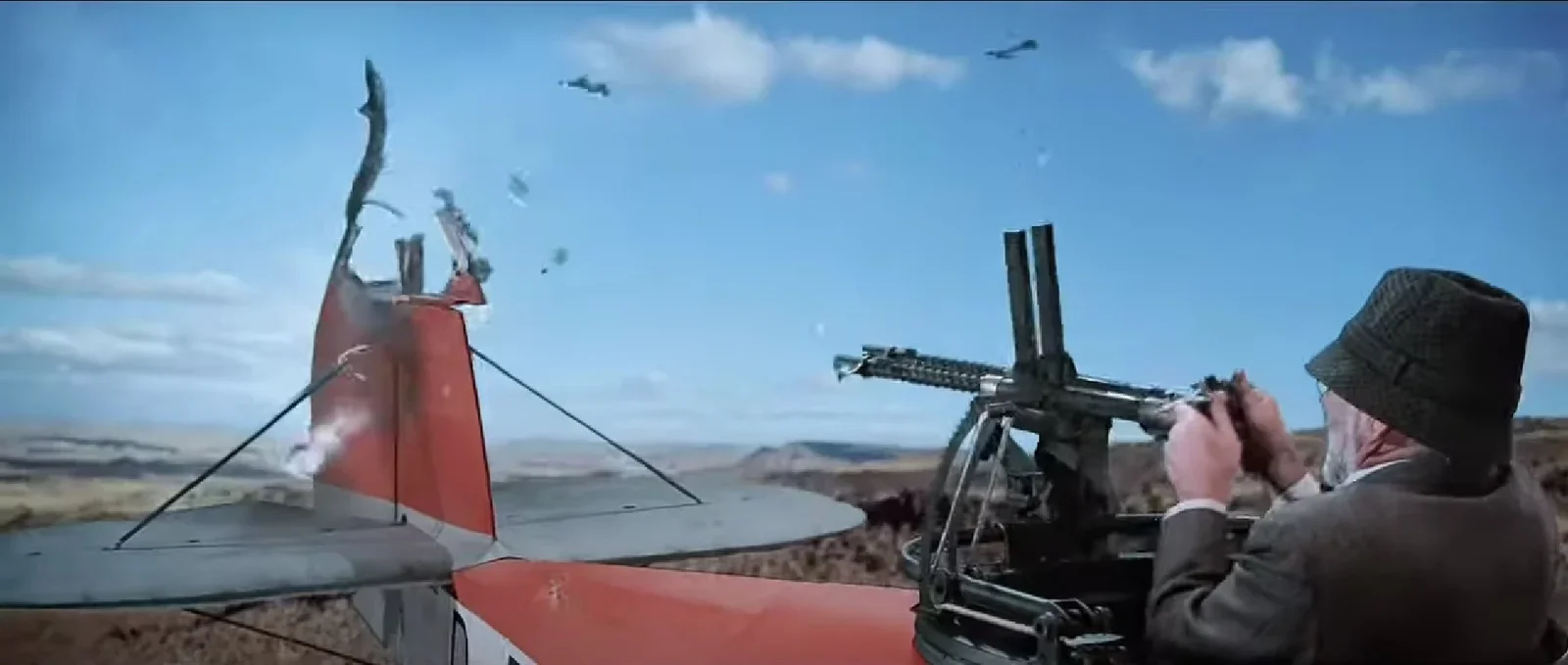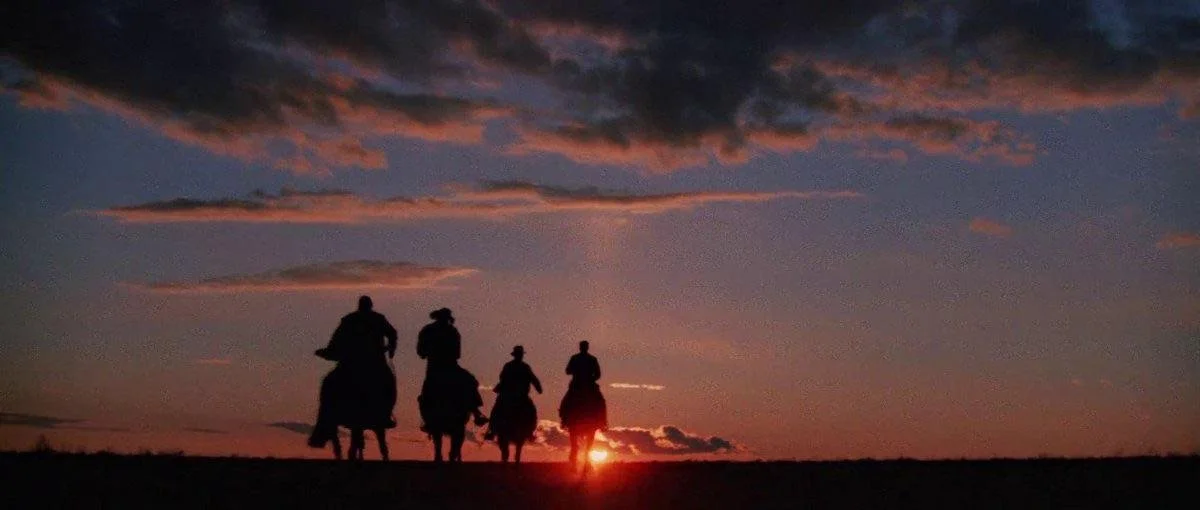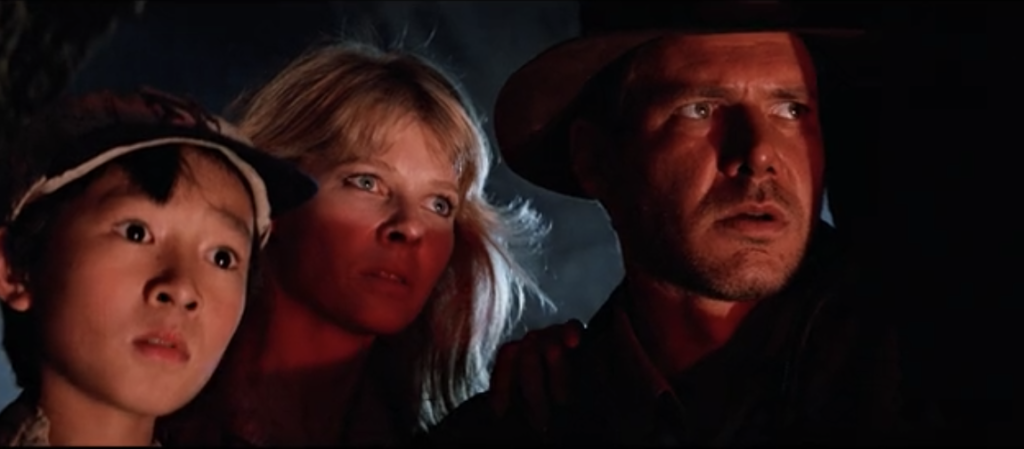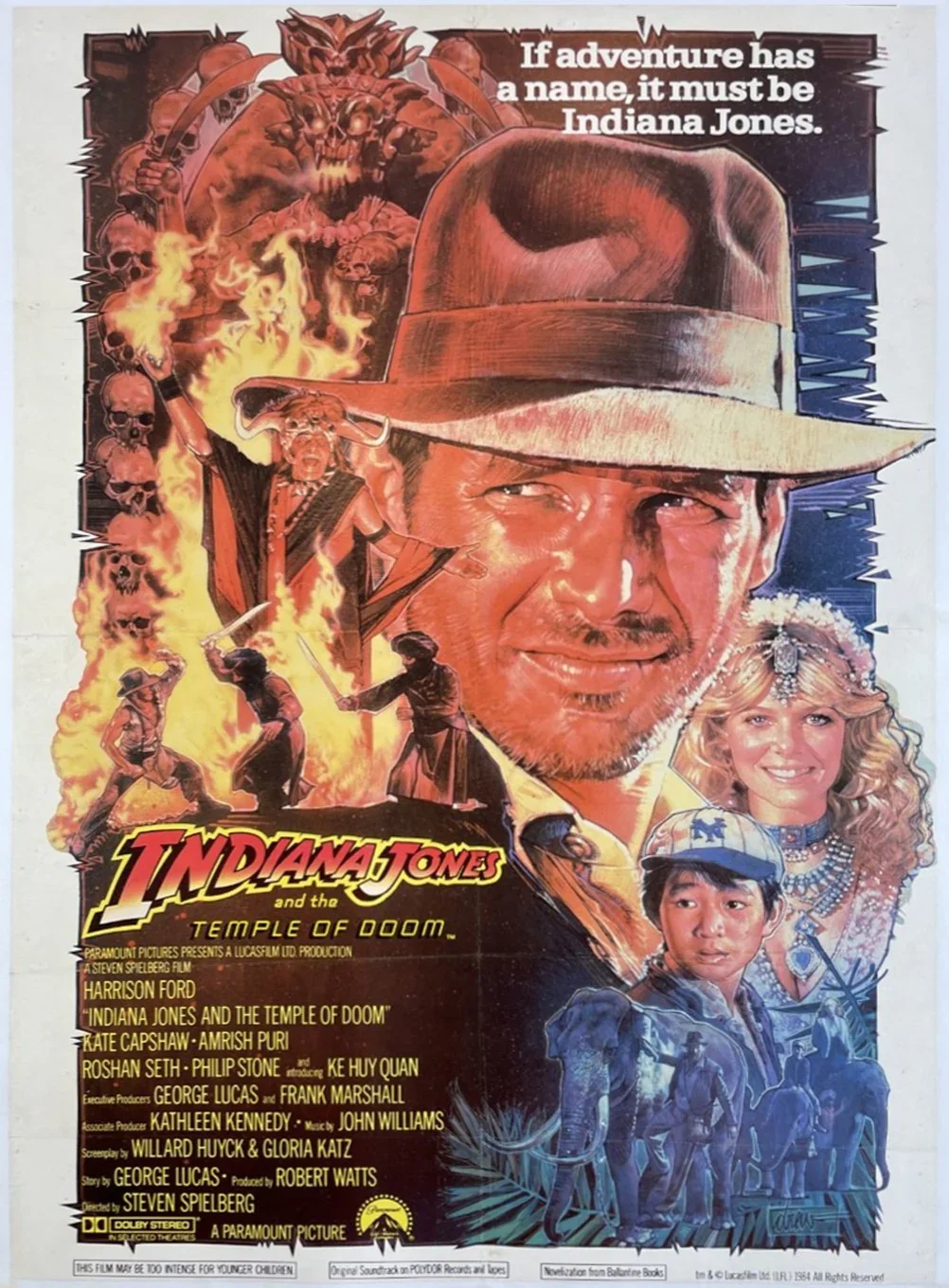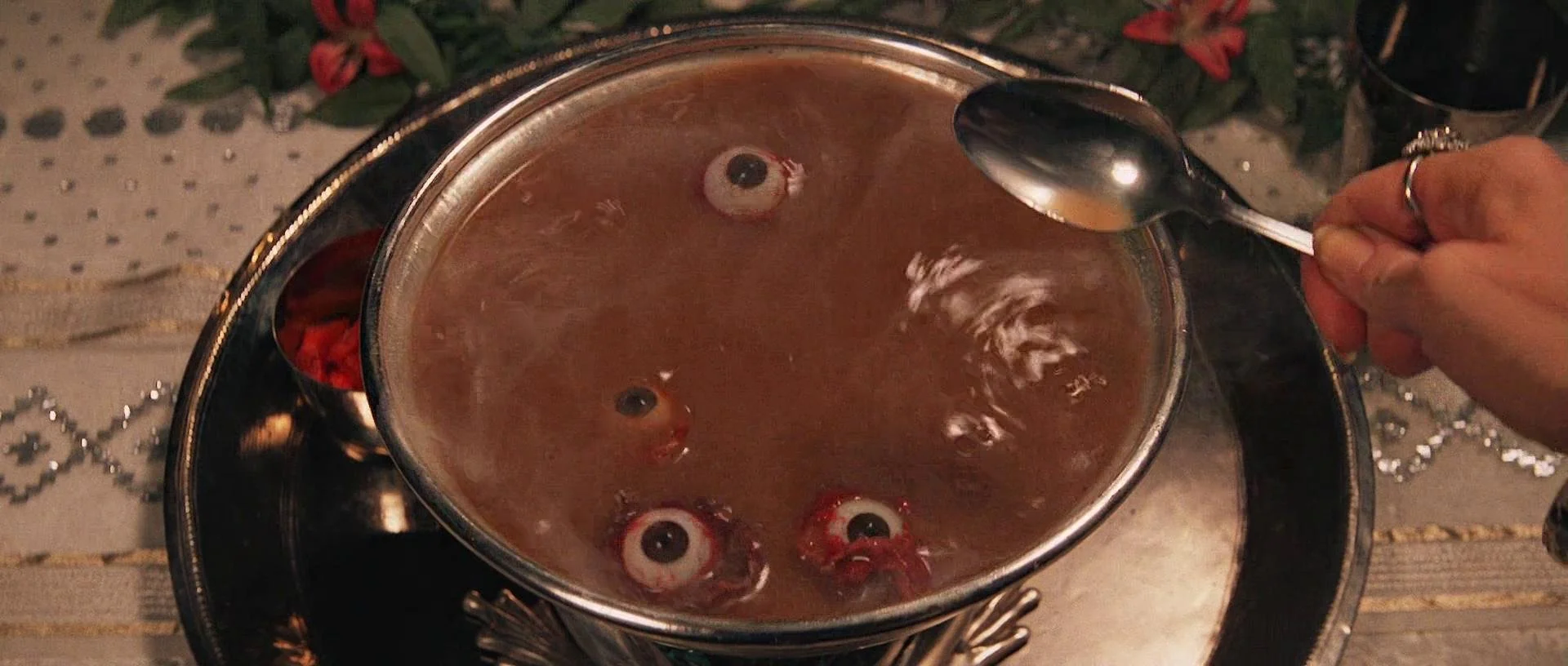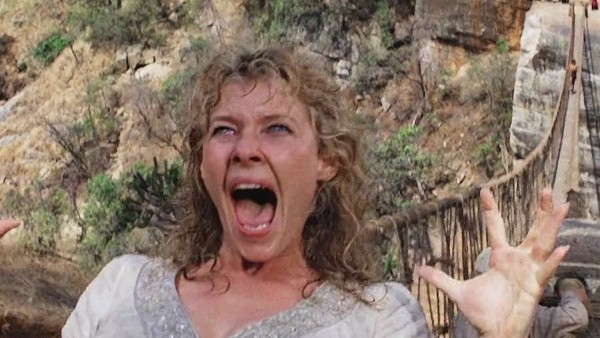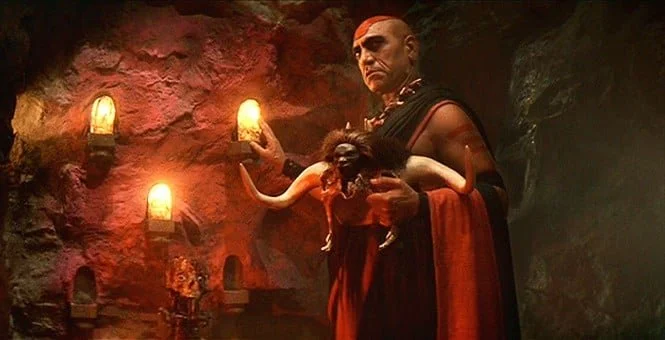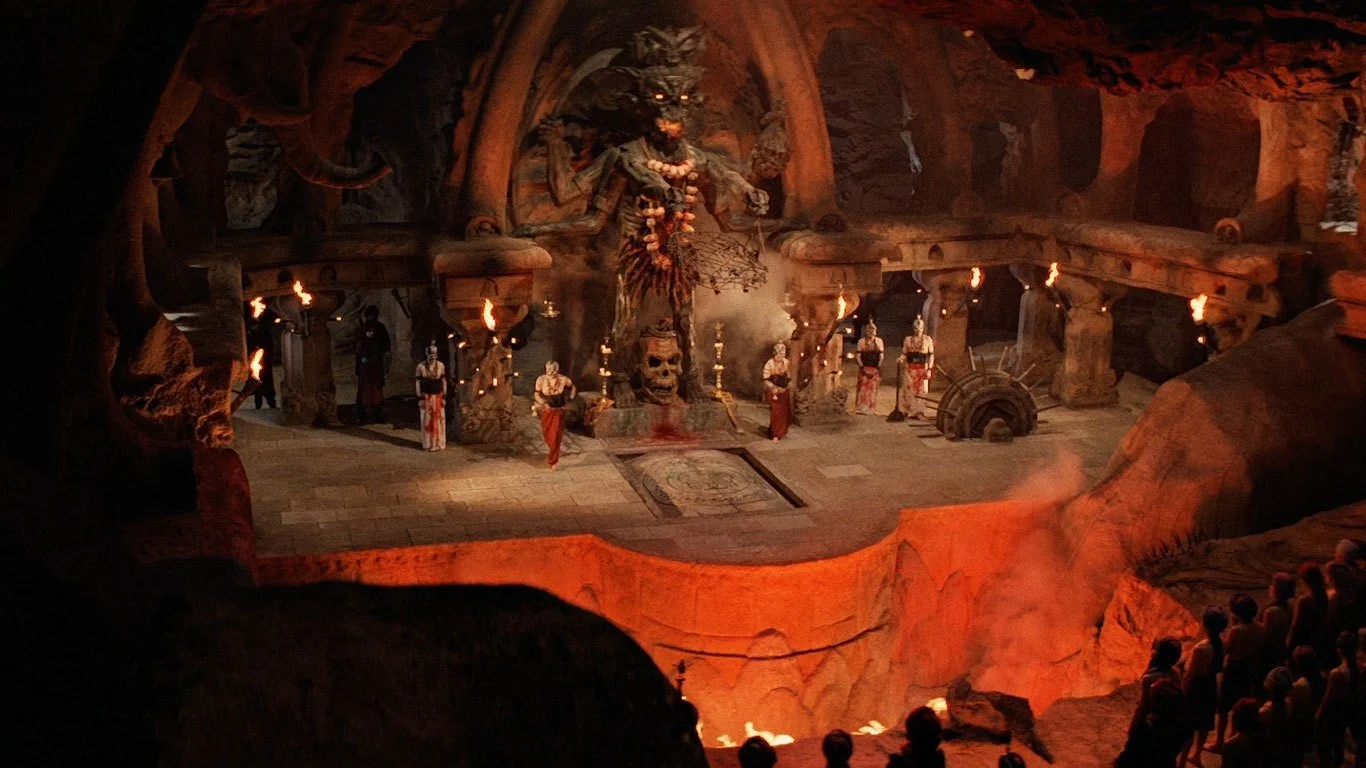Recent Articles
INDIANA JONES’ First LAST CRUSADE: Spielberg Summer 2 Continues!
This week, Spielberg’s signature franchise comes to its original close (even if the series would go on to drink from the cup of eternal life). INDIANA JONES AND THE LAST CRUSADE spends a little too much effort apologizing for TEMPLE OF DOOM, but makes up for it with an inspired crucial piece of casting and by…well, by being really fun and funny for two straight hours. Let’s ride off into the sunset together!
Back when I was a kid, when there were a meager three Indiana Jones movies, I had to reckon with a simple fact…
…I had always found myself a little bored with INDIANA JONES AND THE LAST CRUSADE.
In some ways, the movie never had a chance. I had seen RAIDERS OF THE LOST ARK in an actual movie theater, and it was one of those formative moments for me as a blossoming movie guy. I had caught INDIANA JONES AND THE TEMPLE OF DOOM sleeping over at a friend’s house as a kid, which turned out to be a delirious experience, especially having only seen RAIDERS up to that point; every scene seemed to be crazier than the last, but it was so late at night that the movie felt like it was somehow four hours long. If you had told me I had dreamed the whole thing, I likely would have believed you.
Finally, a couple of years after that, I procured a three-tape VHS collection of the entire Indiana Jones trilogy* and it was finally time to see the story capper, the third and final Indiana Jones tale, the absolute last one we’ll ever get (it’s in the title, after all!).
*Along with a bonus fourth tape containing an episode of the Young Indiana Jones Chronicles. I…never watched that one.
I put it on one night and watched it with my mom. And…I thought it was just okay! I didn’t hate it or anything, but, to be honest, I felt a little underwhelmed by it. Maybe it was because it felt a little too similar to the first one, maybe it’s because I watched it in the comfort of my own home instead of literally anywhere else, causing the moment to blend in with the infinite amount of times I had watched a movie on the family TV, but…LAST CRUSADE just didn’t stand out to me in any way, and it comfortably existed as my least favorite Indiana Jones movie.
Of course, it turns out you’re really stupid when you’re a kid. Returning to this one a couple of times over the past few years has revealed to me one of the more comfortable third entries in the history of franchise filmmaking, even as I still feel its active hesitance to do anything too alienating. Oh, and it’s also really, really funny. Like, easily the funniest of the five Indy films.
As we inch closer to the end of Spielberg Summer 2, let’s take one LAST CRUSADE with Indiana Jones this year!
INDIANA JONES AND THE LAST CRUSADE (1989)
Directed by: Steven Spielberg
Starring: Harrison Ford, Sean Connery, Julien Glover, Denholm Elliot, Alison Doody, John Rhys-Davies
Written by: Jeffrey Boam (screenplay), George Lucas & Menno Meyjes (story)
Released: May 24, 1989
Length: 126 minutes
This time, we catch up with everyone’s favorite archeologist in 1938, and this time, he’s on the case to find two treasures. First, he’s after the Holy Grail, the famous cup that Jesus drank from during the Last Supper. Second, and more importantly, he’s also on the hunt for Henry Jones Sr., his father who has gone missing during his own pursuit for the Grail. Along the way, Indiana Jones will meet back up with old friends like Marcus Brody and Sallah, as well as face new adversaries, like the treacherous Elsa Schneider, the Nazi-sympathizing Walter Donovan, and maybe…just maybe…Adolf Hitler himself. What a fitting last crusade this is shaping up to be!
As alluded to in the intro, there’s a strong element of apology weaved into LAST CRUSADE’s fabric in the wake of the controversy surrounding the darker and more violent content of TEMPLE OF DOOM five years prior, with as many references and structural similarities to RAIDERS OF THE LOST ARK thrown in as it could fit. Indiana Jones teaching a classroom full of love-smitten girls*! An adventure to recover a crucial Christian architect! The return of Marcus Brody! The return of Sallah! The return of Marion Ravenwood….iiiinn the next one! Hell, they even bring back that famous “moving thick red line on a map to indicate the characters are traveling!” thing that was missing from the last one.
*And, to my eyes, at least one male? Don’t get me wrong, I get it. I was just surprised, is all.
In many ways, there’s a logic to this mea culpa philosophy, a line of thinking that can best be described by the “Sorry. Im sorry. Im trying to remove it” dril tweet. TEMPLE OF DOOM has a more-or-less redeemed reputation nowadays, and it did make a ton of money (although, crucially, less than both RAIDERS and LAST CRUSADE), but it was also at the center of a firestorm regarding the content in movies “these days” and basically kicked off the PG-13 era of Hollywood. I get that, now that Spielberg and Lucas were in better head spaces at the end of the decade, there would be a desire to go back to what worked.
In other ways, though, this has always made me feel bad for LAST CRUSADE. I don’t like when movie franchises feel the need to apologize for big swings taken by previous installments*, if only because it always comes off a little desperate. Movie sequels do this kind of thing all the time, burning valuable screen time evoking the original movie (the most egregious example is Jack Sparrow’s very first line in the second PIRATES OF THE CARIBBEAN, a hamfisted redo of the “why is the rum gone” joke that everyone liked in the initial film). I never like it! TEMPLE OF DOOM is easily my least favorite of the first three Indy movies, but that’s only because of a crucial failure in casting, not because of its shift in tone and mood. Redirecting in the face of controversy would suck some of the ambition out of the Indiana Jones franchise from then on (although Four and Five would admittedly take some big swings of its own; aliens and time travel, anybody?).
*It should be noted, though, that viewed through this prism and this prism only, the original three INDIANA JONES movies resemble the philosophical arc of the STAR WARS sequel trilogy: an initial movie that makes a big splash, a follow-up that goes in a completely different direction, followed by an endcap that tries to resemble the first movie as much as possible under threat of execution.
It even feels like it’s apologizing for TEMPLE OF DOOM’s refusal to act like a proper prequel. This time, LAST CRUSADE does that “long-running franchise” thing of going back to the past and showing us how our main character became who he is, the main pitfall TEMPLE OF DOOM avoided for the most part. We get an extended prologue of young Indiana Jones (played by 19 year old River Phoenix!) on his first little adventure, gaining his famous hat and fear of snakes along the way. By all accounts, this is a sequence that should cause major eyerolls for me, it standing for everything I find very exhausting about sequels and all.
But…I kind of like it. I mean, yes, finally learning how Indiana Jones got his fucking hat* is of no interest to me and never will be, but I think this opening chapter is actually quite fun, full of energy, full of that patented Spielberg-ian storytelling-through-action style. Yes, all that “oh, he’s using the whip for the first time!” stuff is there if that’s what you’re interested in, but the whole thing is really more in service of establishing something that hadn’t even been hinted at in this series up to this point: Jones’ relationship with his father. Speaking of….
*It turns out…someone gave it to him. Whoah!
I feel like I’m in no real danger of putting too fine a point on this next statement: Sean Connery as Indiana’s father is one of the most inspired pieces of casting in the entire franchise. He fits into the series so well, to the point where it’s hard to imagine any Indiana Jones movie without him (although most of them don’t). Connery was in an interesting period of his career, having recently come out of a two-year exile after the production frustrations with his off-the-books James Bond comeback, 1983’s NEVER SAY NEVER AGAIN. He was riding the wave of films like HIGHLANDER and THE UNTOUCHABLES, the latter of which earned him a Best Supporting Actor Oscar. It seemed the perfect time for Spielberg to get as close to a life-long dream (directing a Bond film) as he will likely ever get; directing the guy who defined the role for many generations.
He’s so fucking good in this. I dunno. It’s hard to put it in any other words than that. He’s warm and funny where he needs to be, vulnerable in other moments and, most importantly, is able to exactly equal Harrison Ford in screen presence without ever upstaging him. It’s a remarkably comfortable performance from someone who would sometimes be unwilling to give his best towards the end (compare him in this to something like LEAGUE OF EXTRAORDINARY GENTLEMEN, where he is providing third-rate material a performance it deserves). Hell, one of the funnier lines in the movie (“She talks in her sleep”) was apparently an ad-lib from Connery himself, a testament to how open he was to being playful with this role.
Speaking of funny lines and moments, I think the most remarkable thing about LAST CRUSADE is how funny it really is. I suspect this was a conscious choice, a further attempt at distancing itself from TEMPLE OF DOOM. But, it’s one thing to decide to be light and funny, it’s a whole other thing to actually achieve it. LAST CRUSADE contains two whole scoops of bits and business, and they pretty much all work. Henry Sr. accidentally shooting the airplane tail. Harrison Ford doing a fucking Scottish accent. Indiana ending up with a genuine autograph from Hitler himself. My two favorite moments, though, consists of one I had always remembered, and one that I hadn’t.
One I remembered: as Henry and son end up in the clutches of the Nazis, there is this beautiful build-up from (and zoom-in on) Indy about how Marcus Brody, intrepid and loyal friend, is in custody of the diary pages they seek, how he’s too far ahead of them, too connected, too smooth, too familiar with any and all local customs, and will be able to disappear before the Nazis ever know what’s happening. The cut to Brody lost in the streets of Alexandretta, just kind of wandering around, is maybe the funniest moment in a Spielberg movie.
One that I hadn’t: there’s a moment where Indy and Henry are being chased through an airport. As we watch their assailants run through the station, we eventually pan over to two people rather conspicuously holding up newspapers in front of their faces. “Aha! That old trick”, we think to ourselves. As they run by, we assume Indy and Henry are now in the clear. And they are; the reason we know this is because they emerge from the staircase behind these two newspaper guys, who end up really just being two guys reading newspapers! It’s such a dumb joke, but it’s also so delightfully playful.
I think this willing levity is why LAST CRUSADE is able to get away with stuff that normally grates me when they appear in other films. Yes, it’s trying to get the taste of the last one out of its mouth, and yes, it provides hamfisted lore drops* because that’s just what you do in a franchise. But (and this is crucial), it’s done in the spirit of fun, as opposed to abject reverence towards the property. It’s not trying to deify the character of Indiana Jones, it just wants people to have fun with him again.
*Another one that makes me kind of roll my eyes….Indiana Jones’ dad is scared of rats. This is in juxtaposition, you see, to Indiana Jones’ famous phobia of snakes. LOL!
And, as it happens, LAST CRUSADE is a lot of fun! Mission accomplished there. Of course, there’s something a little deflating about watching a movie called LAST CRUSADE, with a story that is already lightly hinting at the idea of Indiana Jones hanging up the whip (an early scene has a villain implying that he is the one that belongs in a museum now), one that ends with Jones riding into the sunset, the ultimate hero’s ending, and remembering “oh yeah, there’s two more of these now”. You do wonder if the 21st century has sapped some of this film’s power, now that it is no longer a series capper, but instead a midpoint.
I understand the constant temptation to return to the well when it comes to successful film franchises, and although we’ll talk about INDIANA JONES AND THE KINGDOM OF THE CRYSTAL SKULL in this space two years from now, I feel like it’s worth mentioning that I thought INDIANA JONES AND THE DIAL OF DESTINY was a good-enough “official finale” for the series. But I’ve always felt like Lucasfilm has forgotten the lesson Indy learns at the end of INDIANA JONES’ first finale…
…his quest for the Grail leads to him “choosing….wisely” and drinking from the chalice, granting him immortality. Immortality, of course, comes at a price, as the Grail’s current keeper informs him. Once he leaves the confines of the temple in which it resides, he will be immortal no more. His only task he can have as an unkillable being is to stay in this one room, keeping watch over the Grail. Obviously, a life with no end that comes with such restrictions is no life at all. Jones chooses to take off into the sunset with his father and friends instead.
At least the character does. His eponymous movie franchise, on the other hand, appears to have chosen to stay inside the temple, keeping guard over a property and extending its life into the infinite. It’s too bad. Had the INDIANA JONES series enjoyed its mortal life, the last image of him riding into the sunset might have been the perfect note to go out on.
But, you can’t always stop the keepers of a billion dollar franchise from choosing…poorly.
THE TEMPLE OF DOOM and the Art of the Unintuitive Sequel: Spielberg Summer 2 Continues!
This week, Spielberg Summer 2: The E(igh)T(ies) continues with one of the darker-toned films Spielberg ever made: it’s INDIANA JONES AND THE TEMPLE OF DOOM! A film that has only grown in reputation over the years (and was largely responsible for the creation of a new MPAA rating!), it’s got action and theatrics to spare…even if only there weren’t that one person screaming the whole time.
I’ve mentioned it many, many times before in this space, but sequels are as hard to make as they are commonplace.
When you’re suddenly tasked with quickly following up a surprisingly successful movie that you spent years of your life crafting, the temptation is so, so high to just repeat the beats that got you the success in the first place. The example I always think of is the AUSTIN POWERS trilogy. The first one? A perfect combination of silly, smart, and stupid comedy, as well as a vessel for Mike Myers to simultaneously spoof the 60s spy movies he grew up loving and to cram in as many peepee, poopoo and penis jokes as he could manage. The two sequels? Save the introduction of Mini-Me in the second and a star-studded opening in the third, it’s…largely more of the same! It’s the same jokes repeated (sometimes over and over), with the hope of recapturing the magic.
Of course, your other option is to go the entire other way from the original in order to try to create something new once again, at the risk of pushing away the audience that made your original a hit. The two movies that come to mind are 1986’s THE TEXAS CHAINSAW MASSACRE 2 and 2017’s STAR WARS: THE LAST JEDI. The former followed up one of the most iconic horror movies of the 70s (as well as one of the most unnerving films to ever dig underneath my skin, pun only sort of intended) with a bunch of 80’s bloody, dark comedy, featuring a scenery-chewing Dennis Hopper front and center. The latter launched a schism within the Church of Star Wars by asking bold, controversial questions that thrilled some audience members and alienated others (questions such as, “What if a 21st century STAR WARS movie had a story?”).
If the snark wasn’t obvious, I love both of those movies, just as much as I don’t really like the two Austin Powers follow-ups. I’m an “unintuitive sequel” kind of guy. My simple demand for any entry in a franchise is that you keep trying to surprise me, which sort of goes against what a Part 2 typically consists of. How can you keep me on my toes when you’re just playing the hits in a higher key? Sometimes, you just gotta play a different song and hope people stick with you.
Which brings me to INDIANA JONES AND THE TEMPLE OF DOOM, maybe the most famous "unintuitive sequel” that takes America’s favorite archaeologist, the enemy of Nazis and a man who believes artifacts should be sought for preservation and not for power, and puts him in a fight against an evil Indian cult, in pursuit of fame and glory above all. Oh, and it’s set a year earlier than that RAIDERS OF THE LOST ARK movie, with approximately zero of the characters you grew to love returning. Where the first one had some wonder, this one is grim and dour. It’s about as unintuitive a sequel as you can get.
It…split audiences at the time! It even freaked some people out, launching a whole new type of movie rating! It may not surprise you, then, that I’m largely a TEMPLE OF DOOM guy, even if I think it has one major, catastrophic flaw. It’s probably the one you’re thinking of.
Let’s dig into the TEMPLE OF DOOM!
INDIANA JONES AND THE TEMPLE OF DOOM
Directed by: Steven Spielberg
Starring: Harrison Ford, Kate Capshaw, Ke Huy Quan, Amrish Puri, Roshan Seth
Written by: Willard Huyck, Gloria Katz
Released: May 23, 1984
Length: 118 minutes
There are so, so, so many wild decisions made in the creation of INDIANA JONES AND THE TEMPLE OF DOOM that make it a really fascinating watch.
First of all, the movie provides a logical answer to the question that plagues all sequels: “how do we continue the original story, one that was crafted as definitively stand-alone?” The solution: make it a prequel! This time, we’re in 1935, one year before RAIDERS, and Indiana Jones is not quite the man of historical ideology as we previously knew him. This time around, he’s less motivated by “this belongs in a museum” than he is “let’s do this to be legends”. The objects he seeks are shiny, and that’s enough.
He also has a sidekick in tow: the young boy Short Round (Ke Huy Quan), who splits his time between being a precocious child in danger, and a legitimately helpful fighter and member of the team. I say “team” because there’s a third person in the mix: a clueless nightclub singer named Willie Scott (Capshaw) that enters into the fold mainly by accident; she escapes from the opening skirmish at Club Obi Wan only with the unexpected help of Jones himself.
The notable thing about TEMPLE OF DOOM being a prequel is that it’s the kind of move that a franchise usually only makes in order to “fill in” mythology gaps (how did our main characters become the people that we know them as?). Here, though, if anything, TEMPLE OF DOOM actually somewhat confuses Indiana Jones’ history; he seems fairly protective of Short Round in 1935, so one has to wonder why they’re no longer hanging out by 1936*. Besides providing us a little bit of an arc as to how Indiana became a little less self-centered (which felt more like an excuse to allow Ford to play Jones a little gruffer this time around), there’s really no connective tissue to RAIDERS here at all. Really bold!
*Yes, I know there’s an extended universe explanation, that they send Short Round off to boarding school. My problem with it is that I don’t care.
The official primary motivation for Spielberg and Lucas setting TEMPLE OF DOOM a year prior to RAIDERS was to avoid using Nazis as the primary antagonists again, which…fair enough, I suppose.* This does wind up with them successfully avoiding that temptation to repeat the beats of the first movie, magnifying it to 120%, then calling it a day. The eventual departure of Lawrence Kasdan from the project (more on that in just a sec!) opened the door to new collaborators: Willard Huyck and Gloria Katz, who also worked with Lucas on AMERICAN GRAFFITI. Although there was an initial plan to bring Marion Ravenwood back for this one, that obviously didn’t end up occurring. It appeared to be fated by the gods that INDIANA JONES 2 was going to be markedly different from INDIANA JONES 1.
*If only God had tried to avoid the same with the 21st century.
Of course, Lucas and Spielberg were in a mood when they made this, too, which undoubtedly contributed to its different feel.
That’s the second bold swing for TEMPLE OF DOOM; its tone. Where RAIDERS has an old-fashioned, bright-eyed sense of adventure, in the spirit of Buck Rogers, or those old jungle serials of the 30s and 40s, TEMPLE OF DOOM is dark and dour, often crossing the line into actively mean-spirited. RAIDERS has a very real deference to other cultures (at least, for an 80s movie set in the 30s), with the story delving into Christian theology without ever getting too judgy. Jones finds friends, well-wishers and collaborators as he hops across the globe just as often as he finds burly men with swords. The only group RAIDERS suggests is to be avoided at all costs are Germans.
TEMPLE OF DOOM, on the other hand, assumes a worldview that everyone is an evil piece of shit, and continued human interaction is unwise. India is especially suspicious: its religious cults involve human sacrifice, child slavery, and the ripping out of still-beating human hearts. Its high society eats a fine-dining meal consisting of scarabs, giant snakes (filled with smaller snakes), eyeball soup, and chilled monkey brains. Even Jones himself becomes a scary antagonist for about a reel, the victim of mind-control. The tone was abrasive enough that it convinced Kasdan, writer of RAIDERS, to drop the project altogether, stating “it’s so mean [...] there’s nothing pleasant about it”.
Oh, and TEMPLE OF DOOM isn’t crazy about women, either. Where RAIDERS provides us a spunky and capable heroine in Marion (even if, to be fair, she’s also constantly getting kidnapped or defeated in a fight), TEMPLE gives us Willie, a privileged and vacuous nightclub singer who never accepts reality for what it is, assumes a desolate and decimated Indian village has a telephone available for her to use and…just…never…stops….screaming. Basically, ever.
So. To back up just a bit, I actually find its dark and bitter worldview to be really fascinating, even if only because it’s a case of a movie fully assuming the mood of its creators. As it happens, both Lucas and Spielberg were going through major changes in their relationship status. Although Steven was about to meet his future wife (Kate Capshaw, who plays Willie), George was in the process of divorcing Marcia Lucas, with whom he had adopted a daughter. The bitterness and pain of this, along with Lucas’ natural desire to make second installments darker (see: THE EMPIRE STRIKES BACK), informs why TEMPLE OF DOOM is so acidic. Hell, it may explain why Willie is such a buffoon; there’s a real hatred behind Capshaw’s character in this movie.
This takes me to my major reservation towards TEMPLE OF DOOM: I cannot bear Willie.
It’s not an original observation (people have been nailing the movie for this character for decades), but it’s one I desperately wish I could buck. I’d love to watch TEMPLE OF DOOM one time and realize “hey, Willie Scott isn’t so bad!” But it’s been almost forty years and it hasn’t happened yet.
Don’t misunderstand me: I understand the idea of Willie. She’s obviously an extension of the “don’t do RAIDERS” again ethos, in the sense that she’s the complete opposite of Marion Ravenwood: she’s incapable, she’s loud, and she doesn’t appear to have any chemistry with Indiana Jones, nor does she have any interest in developing any. In theory, she should be another fun obstacle in a whole movie made up almost entirely of obstacles for Jones to figure out. I think the structure of Willie Scott as a character is valid, even smart.
But, the truth of the matter is….Kate Capshaw’s performance is grating. And annoying. And persistent. And not fun for even a second. And I think that’s the issue for me. If Willie was a fun snobby, clueless rich girl, we might have had something. But she’s not. She’s just shrill, actively trying to keep the movie from moving forward at all times. I don’t even think she pulls off the “sub-par nightclub singer” aspect to Willie all that well in the opening scene. Yes, kicking the movie off with a vaguely lame musical number, sung in a different language, is a big swing, and part of the point is that Willie isn’t all that good. But performing badly on purpose is a unique skill set that is arguably even harder that performing well on purpose (the master of this was probably Lucille Ball). Capshaw doesn’t appear to possess it. So, instead of thrillingly terrible, she’s just kinda awkwardly average.
So anyway, I just cannot warm up to Capshaw in this. And that makes her the single most catastrophic change from RAIDERS to TEMPLE OF DOOM.
The good news, though, is that it’s pretty much the only change from RAIDERS that doesn’t work for me. Even its frenetic pace, which constantly threatens to be way too much, never quite becomes exhaustive. Seriously, it’s hard to overstate how fast TEMPLE OF DOOM moves once it begins. In just the opening reel alone, we get a shootout in a nightclub, a car chase, Indiana Jones and co. hopping out of a crashing plane in a slowly inflating liferaft. Before it ends, we get a mineshaft roller-coaster ride, a full-on brawl inside a temple, collapsing rooms with spikes and bugs, and a precarious chase on a rope bridge. It just goes and goes and goes, with just a couple of pitstops for some exposition along the way.
And, you know what? It’s great. I know Scorsese made the infamous remark that Marvel movies were more like theme park rides than films to him, which I never took as fully negative (even though I think it was meant to be) or even really untrue. But, to me, TEMPLE OF DOOM has always truly had the pace and rhythm of an exquisitely-made roller coaster, the true combination of theme park ride and film.
Also, outside of the aforementioned Capshaw, I think the main performances on display here are pretty great. Ford playing a slightly more cynical and less-beaten-down Indy is a lot of fun, but it’s even more interesting to see glimpses of the man he’ll become down the line in his interactions with Short Round, as well as his indignity at the slavery of children. Speaking of Short Round, Ke Huy Quan’s child performance is one of the more comfortable and natural ones in the history of the medium, with something like twenty simply perfect line deliveries. The moment that I rewound over and over as a kid was him, though, doesn’t involve a line at all: it’s him at the maharaja’s palace, screaming and running away from the line of female dancers approaching him.
I even think Amish Puri is one of the more underrated villains in the entire Indiana Jones filmography. Yeah, Mola Ram is painted very broadly, but it’s a fun broad (standing in stark contrast to Willie Scott), an unrepentant leader of a human sacrifice cult, and boy does this guy like sacrificing humans. Puri’s career was otherwise exclusively based out of India, but he made his name off of villain roles. His particular skill there translates beautifully in TEMPLE OF DOOM. He’s imposing, scary enough that it freaked me out just a bit as a kid, and you can’t wait for Indiana Jones to get the upper hand by the end. If you’re not going to do Nazis again, how much more would you want than that?
The last major thing I love about this movie*? The beautiful sets. In particular, the titular doom-filled temple looks so tactile and real, even though it’s so clearly a movie set. Don’t you want to just wander around and start touching stuff, just to see what would happen? Don’t you want to go exploring, just to see what you’d find? This is an element of filmmaking that we’ve just totally lost now that we have blue-screen, green-screen, and The Volume, and it’s a fucking shame (it’s also a big reason why the fourth Indiana Jones movie is such a letdown, but we’ll talk about that in a couple of years).
*Besides Dan Aykroyd’s micro-cameo towards the beginning.
TEMPLE OF DOOM’s reviews were mixed at the time, although its reputation has improved enough over the years that its Rotten Tomatoes score currently sits at 77%. No less an authority than Roger Ebert gave it a perfect rating, and, for what it’s worth, Pauline Kael preferred TEMPLE OF DOOM to RAIDERS OF THE LOST ARK. But many, many others found it unpleasant, and too dark. A lot of parents agreed, and Spielberg once again found himself at the business end of some complaints, alleging that the movie was too hard-edged for the PG rating it was given.
The thing to remember there is that, in 1984, the MPAA had only four possible ratings: G, PG, R and X. Yep, there was no intermediary rating between the more family-friendly PG and the decidedly adult R. We have Steven Spielberg and INDIANA JONES AND THE TEMPLE OF DOOM* to thank for the implementation of the PG-13 rating, which is now maybe the most crucial (and lucrative) rating a movie can get nowadays. The course of Hollywood history was forever changed by the decision to run the other way (creatively speaking) from RAIDERS OF THE LOST ARK.
*As well as GREMLINS, which also came out in 1984 and received similar criticism about its content.
Spielberg himself has tended to distance himself from THE TEMPLE OF DOOM, stating that the “greatest thing [he] got out of it was that [he] met Kate Capshaw”. I feel like he may be taking the wrong lesson out of the experience in many ways. From here, he would enter a period of “responsible film-making”, and one has to wonder if back-to-back films that came with complaints as to its contents started getting to him. It shouldn’t have. Messing with ET twenty years later ended up being a big mistake, and I feel like downplaying the power and fun of TEMPLE OF DOOM is an equal error. No, it’s no RAIDERS, and, yes, you desperately miss Karen Allen. But it’s also one of the better pure adrenaline action films of the 80’s, with superior filmmaking on display to offset some of its more unpleasant aspects.
And even those unpleasant aspects represent the kind of risk-taking that more big budget sequels should have the guts to perform. Even when it’s not fully working, the movie is never uninteresting, and that’s probably enough to put it in the top 10% of all sequels ever made.
Ultimately, you’d have to have your heart ripped out of your chest to not at least respect INDIANA JONES AND THE TEMPLE OF DOOM.






